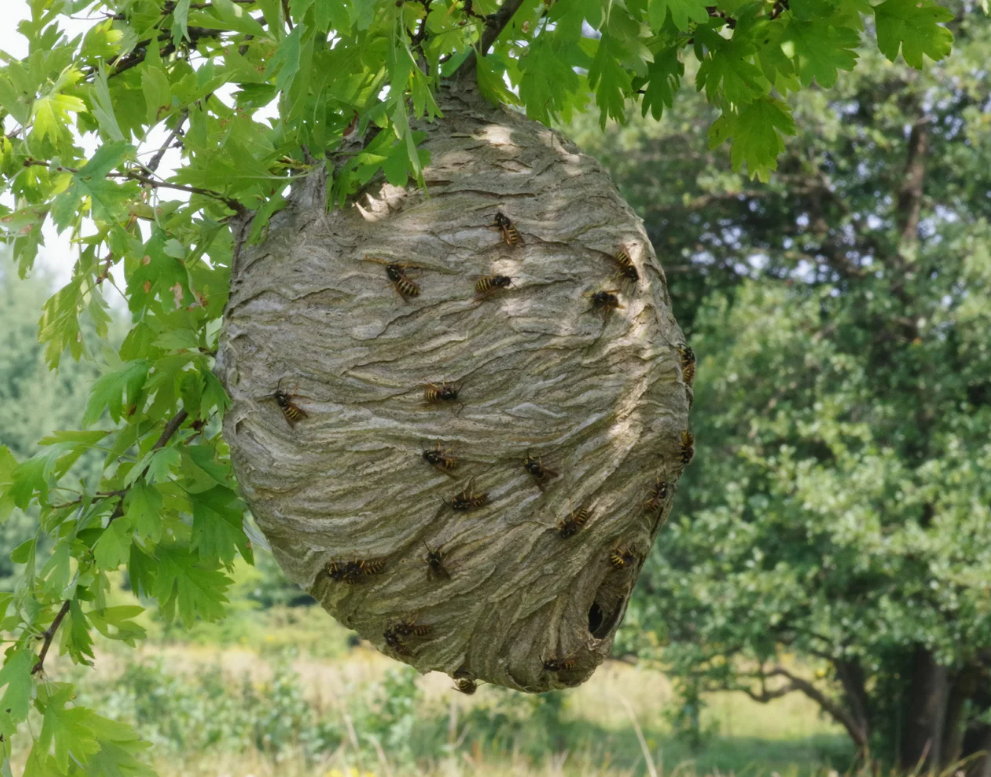Every spring and summer, property owners face a recurring nuisance: wasps. These aggressive insects don’t just ruin outdoor enjoyment-they pose a real threat, particularly to anyone allergic to their stings. That makes preventing wasp nests more than just a convenience; it’s a safety must. But what’s the best way to stop them before they start nesting?
From DIY deterrents to professional-grade solutions, this article covers the best methods for keeping your home, garden, and outdoor spaces wasp-free. Whether you’re dealing with recurring wasp problems or planning ahead, you’ll find clear, actionable strategies here to protect your property.
Bonus Tip: Printing free flyer printing templates with pest prevention tips to distribute around the neighborhood helps boost community awareness—and reduces nests on a neighborhood scale.

Why Wasps Choose Your Property
In order to prevent wasp nests effectively, you must first understand why they construct their nests around your homes and gardens in the first place. Wasps are basically attracted to those places that afford them shelter, food, and water. Among their favorite nesting spots are eaves, soffits, sheds, attics, trees, and unused outdoor equipment.
Common attractants include:
- Food waste: leftover meat, sweets, or pet foods.
- Standing water: Birdbaths, leaky hoses, or clogged gutters.
- Sheltered corners: covered porches, overhangs, and other dry, undisturbed areas
Wasps are territorial, meaning once they nest, they defend their area quite aggressively. That’s why it is much better to deter them early on than deal with an established colony.
Wasps build their nests around sources of food, water, and shelter. Keeping these attractants inaccessible serves as the best defense.
Most Effective Methods of Wasp Nest Prevention
1. Regular Property Inspection
One of the simple, yet most overlooked, ways to prevent nests is routine checks around your property. Early spring is the best time to start since this is when queen wasps are searching for nesting sites.
What to look for:
- Small, papery structures in corners or crevices
- Increased wasp activity in a particular area
- Damaged or warped wood attracting wasps, which chew it to make nests
Inspections should be done bi-weekly during peak seasons.
Regular inspections help you catch and remove potential nests before they turn dangerous.
2. Seal Gaps and Crevices
Wasps often enter homes through small cracks, holes, or vents. Sealing these entry points limits potential nesting sites.
Key areas to seal:
- Around window frames and door trims
- Under eaves and roof tiles
- Utility entry points – cable, pipe, vent openings
Seal the gaps using silicone-based caulk or weather stripping. Larger vents or openings can be covered by mesh screens.
Sealing up cracks and points of entry prevents wasps from finding a safe place for nesting indoors.
3. Use natural and commercial repellents
Certain odors repel wasps. You can deter them from nesting using homemade deterrents or commercial sprays.
Natural deterrents:
- Peppermint oil: Mix with water and dish soap; spray around high-risk areas.
- Clove, geranium, and lemongrass oils: These essential oils are proven repellents.
Commercial products:
- Ready-to-use wasp repellents
- Wasp decoys, such as fake nests
Apply repellents early in the season and reapply after rain.
Both natural and chemical repellents deter wasps from resting on or within treated areas.
4. Eliminate Food and Water Sources
Wasps are scavengers. Access to food and water easily invites them to stay.
Steps to perform:
- Keep waste bins tightly closed.
- Clean up any food or drink spills outdoors.
- Remove fallen fruits and compost responsibly.
- Eliminate leaks from outdoor faucets and drain sources of standing water.
If events are held outdoors, clean up thoroughly afterward.
Removing food and water sources makes your property less attractive to wasps.
5. Put up Wasp Traps Early
Wasp traps set early in spring can catch the queen wasps before they nest. Traps should be placed out of human activity zones to attract them elsewhere.
Types of traps:
- Homemade traps with a sweet bait
- Commercially available hanging traps with pheromones
Be sure to empty and reset them frequently for best results.
Early trapping of queen wasps significantly reduces the possibility of nest formation.
6. Hire Professional Pest Control (When Needed)
If you are facing recurring infestations or a particularly aggressive species, professional pest control might be the most effective long-term solution. Experts can:
- Identify nest locations you can’t see
- Apply long-lasting treatments safely
- Offer property-specific prevention tips
Professional services often include warranties or seasonal maintenance plans.
If problems with wasps are persistent, professional pest control provides safe, effective, and long-lasting solutions.
Preventative Maintenance Calendar
Here’s a seasonal guide to help you stay proactive:
- Spring: Initiate control measures; apply repellents; set traps
- Summer: Maintain deterrents; monitor food/water sources
- Fall: Seal cracks, remove old nests (vacant ones)
- Winter: Repair exteriors; prepare for next season
A consistent effort throughout the year will reduce the level of infestation.
A seasonal approach to maintenance maximizes your chances of keeping wasps away all year.

FAQs About Preventing Wasp Nests
How do I know if a wasp is scouting for a nest?
Scouting wasps can be seen hovering around eaves, corners, or crevices repeatedly. Besides being non-aggressive, they are actively searching for places to nest.
Scouting wasps show up in early spring and often examine nesting sites.
Do sham nests actually dissuade wasps?
Yes, often. Wasps are territorial and will avoid areas they perceive as belonging to another colony.
How it works is mainly by misleading the wasps that the space is already occupied.
Do wasps return to their old nests?
No, wasps do not reuse old nests. However, if the site was favorable, new queens may build near it the next year.
Old nests are not reused but nearby nesting is common if the conditions stay favorable.
Are natural repellents as effective as chemical ones?
For prevention, especially, natural repellents are effective, while for active infestations, chemical methods may prove heftier.
Natural repellents help with prevention, while chemical options are better for severe infestations.
Can I safely remove a small wasp nest myself?
If the nest is small and not active, it can be carefully removed. It should be done when wearing protective clothing and at night.
Removing smaller nests can be done with caution, but larger nests are best left to professionals.
Final Thoughts: Stay Proactive, Stay Protected
Wasps are tenacious creatures, and no property is fully immune to their nesting presence, but with the right strategy, you can prevent them from infesting your place.
Concentrate on frequent inspections, sealing access points, applying repellents, and removing attractants.
Remember, early intervention is often the key to long-term protection. Prevention by more homeowners would greatly reduce wasp infestation.
Combine seasonal maintenance and repellents for effective prevention of wasp nests, with early inspections to ensure a wasp-free property.
